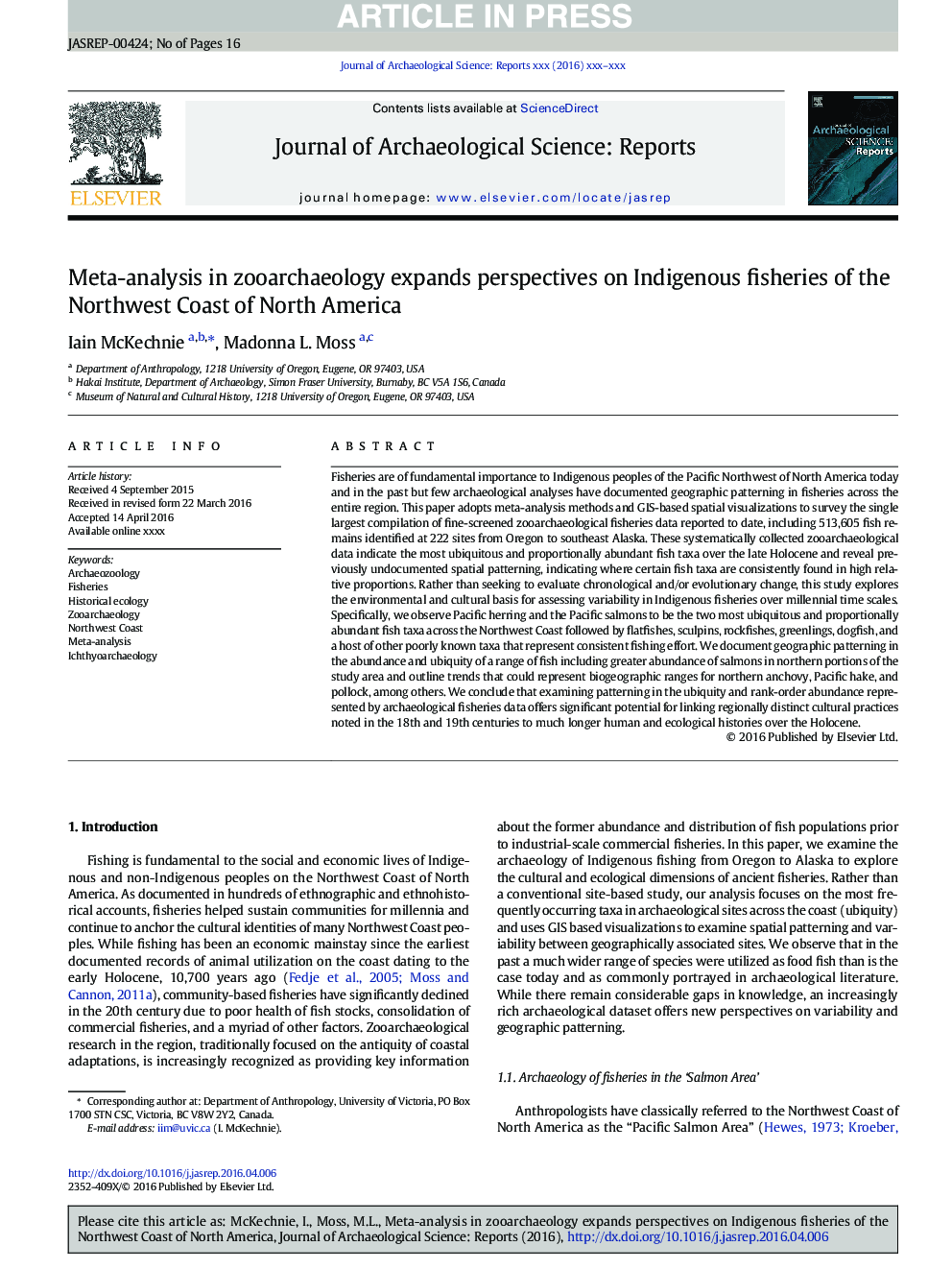| Article ID | Journal | Published Year | Pages | File Type |
|---|---|---|---|---|
| 7445312 | Journal of Archaeological Science: Reports | 2016 | 16 Pages |
Abstract
Fisheries are of fundamental importance to Indigenous peoples of the Pacific Northwest of North America today and in the past but few archaeological analyses have documented geographic patterning in fisheries across the entire region. This paper adopts meta-analysis methods and GIS-based spatial visualizations to survey the single largest compilation of fine-screened zooarchaeological fisheries data reported to date, including 513,605 fish remains identified at 222 sites from Oregon to southeast Alaska. These systematically collected zooarchaeological data indicate the most ubiquitous and proportionally abundant fish taxa over the late Holocene and reveal previously undocumented spatial patterning, indicating where certain fish taxa are consistently found in high relative proportions. Rather than seeking to evaluate chronological and/or evolutionary change, this study explores the environmental and cultural basis for assessing variability in Indigenous fisheries over millennial time scales. Specifically, we observe Pacific herring and the Pacific salmons to be the two most ubiquitous and proportionally abundant fish taxa across the Northwest Coast followed by flatfishes, sculpins, rockfishes, greenlings, dogfish, and a host of other poorly known taxa that represent consistent fishing effort. We document geographic patterning in the abundance and ubiquity of a range of fish including greater abundance of salmons in northern portions of the study area and outline trends that could represent biogeographic ranges for northern anchovy, Pacific hake, and pollock, among others. We conclude that examining patterning in the ubiquity and rank-order abundance represented by archaeological fisheries data offers significant potential for linking regionally distinct cultural practices noted in the 18th and 19th centuries to much longer human and ecological histories over the Holocene.
Keywords
Related Topics
Social Sciences and Humanities
Arts and Humanities
History
Authors
Iain McKechnie, Madonna L. Moss,
